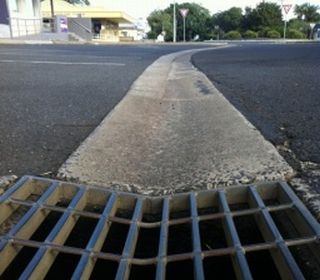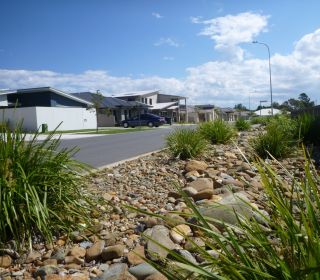DRINKING WATER overview


Have you noticed how dirty the stormwater can become after heavy rain? This is stormwater pollution and it affects bird, fish and marine life and can also be a health risk for swimmers. There are different types of stormwater pollution:
One of Ballina Shire Council’s priorities is to reduce stormwater pollution in our community. We have developed an Urban Stormwater Management Plan to ensure we have modern, efficient and well-designed stormwater management systems.
The plan aims to:
We have identified a number of stormwater catchments that we are targeting to reduce pollution and improve water quality.
Council has developed a Wetland Implementation Management Action Plan aimed at restoring the health of the Chickiba wetlands which have been slowly dying because of poor drainage.
We are also working on improving the drainage of nearby sporting fields and reducing the risk of localised flooding which should also improve the quality of stormwater run-off into the Chickiba Wetlands.
Lake Ainsworth is an important recreational and environmental asset and remains a key visitor destination in the Ballina Shire.
Lake Ainsworth is categorised as a typical acidic freshwater coastal dune lake and covers an area of 12.4 hectares. It’s managed by NSW Crown Lands and the southern end reserve is managed by Ballina Shire Council.
The water quality snapshots below have been used to facilitate the preparation of the Lake Ainsworth Coastal Management Program.
Shaws Bay is a popular tidal swimming and recreation area adjacent the Richmond River at Ballina.
During heavy rain Shaws Bay is particularly affected by stormwater run-off which affects water quality.
Council’s Shaws Bay Estuary Management Plan addresses stormwater run-off and water quality as well as other issues including erosion, mangroves and sea grass.
Stormwater run-off into the Boat Channel/Moat at Lennox Head and along some sections of Seven Mile Beach affects the water quality and marine life in these areas which are a part of the Cape Byron Marine Park.
This area has been identified as a candidate for receiving stormwater quality improvement devices as the stormwater network is upgraded.
North Lakes is not a naturally occurring water body but are stormwater treatment ponds that were constructed as part of the North Lakes Residential Estate in 1991.
Stormwater from the roads, roofs, footpaths, gardens, lawns and carparks within the North Lakes estate all drain directly into the Lakes where it is treated before discharging into the adjacent natural wetland and North Creek.
These stormwater ponds have become inhabited by many native fish, bird species and native riparian vegetation. Whilst this beneficial natural improvement has occurred the underlying function of the Lakes is to treat stormwater from the estate.
A Water Quality Management Plan for the area has been developed.
Much of Ballina Shire is located on the Richmond River flood plain. Some streets and roads within Ballina, Wardell and Lennox Head are located below the Highest Astronomical Tide level. Because of the low lying nature of the ground stormwater can often drain slowly, this issue is made worse when rain occurs during high tides, high flows in the river or during storms.
For more information visit Council's Floodplain Management page.

